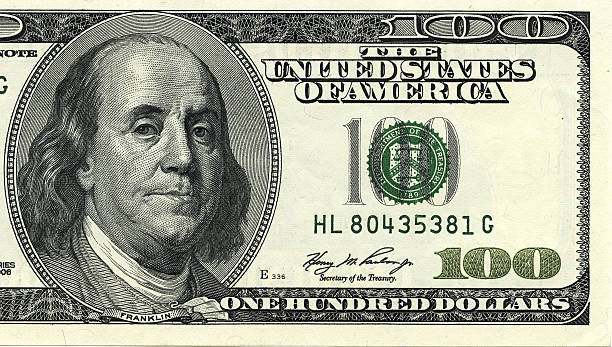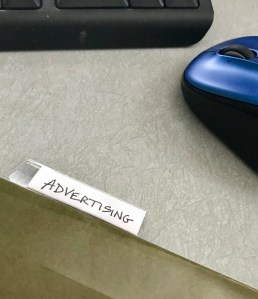One of the fun things about moving is finding your “memory boxes”. One of mine was falling apart so I had to dig through everything and transfer it all to a new box. Yeah, that took a lot longer than it should. (Remember, one of my Core Values is Nostalgia.) One item I found that brought back a flood of memories was a short story I wrote back in 1990 about a spring break trip to Colorado and Utah.
Back in 1990 my favorite author was Pat McManus, a humor writer who wrote columns for Outdoor Life, Field & Stream, and other magazines. Pat also wrote several side-splitting books about camping, hunting, fishing, and growing up in the 1930’s and 1940’s in the great outdoors. Rarely did I go camping without one of his books stashed in my backpack. It was a necessary weight.
Not surprisingly, my writing style for my short story back in 1990 was quite similar to Pat’s humor.
Back in 2005 Roy H. Williams told me that if I wanted to learn to write better, I needed to read better.  In my notes from one of Roy’s workshops I had circled a book idea, Poem A Day edited by Retta Bowen, Nick Temple, Nicholas Albery, and Stephanie Wienrich.
In my notes from one of Roy’s workshops I had circled a book idea, Poem A Day edited by Retta Bowen, Nick Temple, Nicholas Albery, and Stephanie Wienrich.
Poetry is the language of emotions. Advertising works best when it reaches you on an emotional level. Poetry is looking at ordinary things from unique and surprising perspectives. Advertising is giving your potential customers a new way to look at your business. Poetry uses interesting word combinations to set the mood. Great advertising uses interesting word combinations to get your attention.
Back in 2010 I did a staff training using the opening lines from several great books such as …
“It is a truth universally acknowledged, that a single man in possession of a good fortune, must be in want of a wife.” Jane Austen – Pride & Prejudice
“There was a boy called Eustace Clarence Scrubb, and he almost deserved it.” C.S. Lewis – The Voyage of the Dawn Treader
“Far out in the uncharted backwaters of the unfashionable end of the Western Spiral arm of the Galaxy lies a small unregarded yellow sun. Orbiting this at a distance of roughly ninety-eight million miles is an utterly insignificant little blue-green planet whose ape-descended life forms are so amazingly primitive that they still think digital watches are a pretty neat idea.” Douglas Adams – The Hitchhiker’s Guide to the Galaxy
“Here is Edward Bear, coming downstairs now, bump, bump, bump, on the back of his head, behind Christopher Robin.” A.A. Milne – Winnie the Pooh
In that same meeting I played the opening music from Aaron Copeland’s Fanfare for Common Man, Beethoven’s Fifth Symphony, and The Who’s Baba O’Reilly.
We talked about how the opening sets the mood for everything else. We talked about the importance of first impressions. We talked about rhythm and feelings. We also talked about all the “openings” a customer has at our store.
It isn’t just the greeting that sets the mood.
We identified the following “first impression” moments:
- Phone
- Parking Lot
- Front Window
- Front Door
- Store Atmosphere
- Appearance of Staff
- Greeting
Notice how many “first impressions” happen before you even say, “Hello. Thank you for coming in,”? That’s a lot of mood setting and emotion-creating before you even open your mouth.
When you read better, you write better. When you visit better stores and truly look at the moods and emotions they are trying to evoke, you’ll have better ideas for your own store.
Take that list above and go visit your favorite stores. See if you can figure out who is making the best first impressions. Then go back to your store and see if you can figure out what first impression you are giving your customers.
The better your first impression, the easier it is for your staff to make connections and build relationships necessary to compete in today’s retail climate.
-Phil Wrzesinski
www.PhilsForum.com
PS When you visit other stores, take good notes. When you attend workshops and presentations, take good notes. Then revisit your notes often. I don’t just look at those notes for a walk down memory lane. I read my notes from old workshops because there are often more nuggets in there than I could ever possibly remember. Sometimes when you get home from a presentation it isn’t the right time for one of those nuggets. But when you revisit it later, the timing may be perfect.
PPS Yes, in some ways this is a meta-post. Notice how my blogs often start with a story? Stories are powerful tools in advertising because they get your attention, speak to the heart, and are more memorable. In other words, they set the mood and make a good first impression. If you set the wrong mood, you put up obstacles to sales. If you set the right mood, you grease the skids for sales. I was lucky in that Toy House was a downtown business, but with our own parking lot. But you should have seen how I fretted about the cleanliness of that parking lot—especially in the winter.


 The big chains get them daily by the hundreds. If I told you those soulless corporations didn’t care, you’d believe me. They do care, but not nearly as much as you do when someone writes something bad about you.
The big chains get them daily by the hundreds. If I told you those soulless corporations didn’t care, you’d believe me. They do care, but not nearly as much as you do when someone writes something bad about you. I hope for Walmart’s sake that the new bags are less than half the cost of the old bags. Otherwise their cost-cutting move is costing them more than it saves.
I hope for Walmart’s sake that the new bags are less than half the cost of the old bags. Otherwise their cost-cutting move is costing them more than it saves.

 PLACEMAT ADS
PLACEMAT ADS
 Wait, let’s back up a moment. For those of you who have never used Google AdWords, here is how it works. You select a word or phrase you wish to use. If someone searches for that particular word or phrase, your name will appear in the paid section in the search (above the organic results) if—and this is the key—you agreed to spend as much per click to be one of the top three to five businesses who also chose that word.
Wait, let’s back up a moment. For those of you who have never used Google AdWords, here is how it works. You select a word or phrase you wish to use. If someone searches for that particular word or phrase, your name will appear in the paid section in the search (above the organic results) if—and this is the key—you agreed to spend as much per click to be one of the top three to five businesses who also chose that word.
